Medaka Box starts off looking like a standard high school comedy about a perfect student council president solving campus problems. Then it spirals into one of the most complex, meta, and frankly mind-bending power systems in manga history. While everyone talks about Medaka Kurokami’s abnormal powers or Kumagawa’s minus ability, there’s another category of abilities that breaks reality in fascinating ways: Styles.
Unlike Abnormalities (innate talents that make people perfect) or Minuses (destructive powers born from trauma), Styles are special abilities based on concepts, language, perspective, or specialized techniques. What makes Styles particularly interesting is that even “normal” people can learn them—they’re not necessarily something you’re born with.
The Style users in Medaka Box can literally rewrite the rules of reality through grammatical tricks, conceptual manipulation, or just straight-up breaking physics. Let’s rank the seven characters whose Styles most dramatically break the fabric of the universe.
1. Namanie Nienami (Contradictory Conjunction)
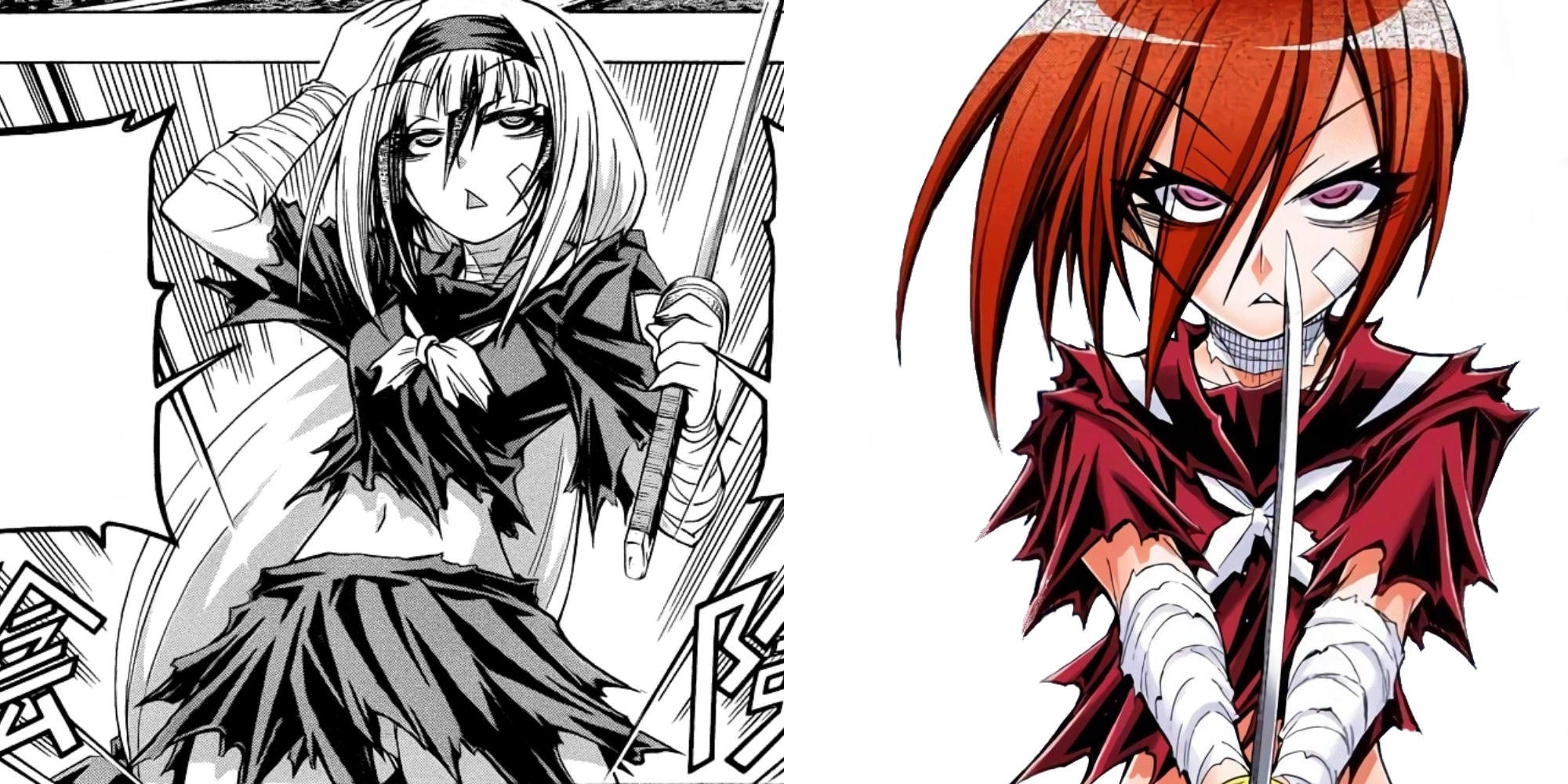
Namanie’s ‘Therefore’ Style allows her to establish impossible connections between statements, letting her slice through a battleship with a simple sword by manipulating causality itself.
Namanie Nienami uses what might be the most broken ability in all of Medaka Box: the Contradictory Conjunction Style, also known as the “Therefore” Style. This power is literally breaking reality through grammar.
Here’s how it works: Namanie states a premise, then adds “therefore” (だからこそ, dakarakoso), and then states a conclusion—and reality bends to make that conclusion true, even if it makes absolutely no logical sense. For example, “My opponent is incredibly strong, therefore I can defeat them easily.” The stronger her opponent, the more effective her ability becomes, which completely inverts typical power scaling.
The sheer reality-warping potential here is insane. Namanie once sliced a battleship in half with a regular blade, simply by establishing this contradictory causal relationship. She can essentially override physics, logic, and probability by manipulating the concept of cause and effect.
What makes this even more fascinating is that this Style isn’t entirely exclusive—Zenkichi Hitoyoshi temporarily gained this power during his fight against Iihiko, showing that Styles can sometimes be transferred or taught, unlike the innate powers of Abnormals like Medaka Kurokami.
While Kumagawa’s All Fiction power (erasing anything from existence) gets a lot of attention, Namanie’s Contradictory Conjunction might actually be more fundamentally broken—it doesn’t just erase reality, it rewrites the rules of how reality works in the first place.
2. Iihiko Shishime (Irreversible Destruction)
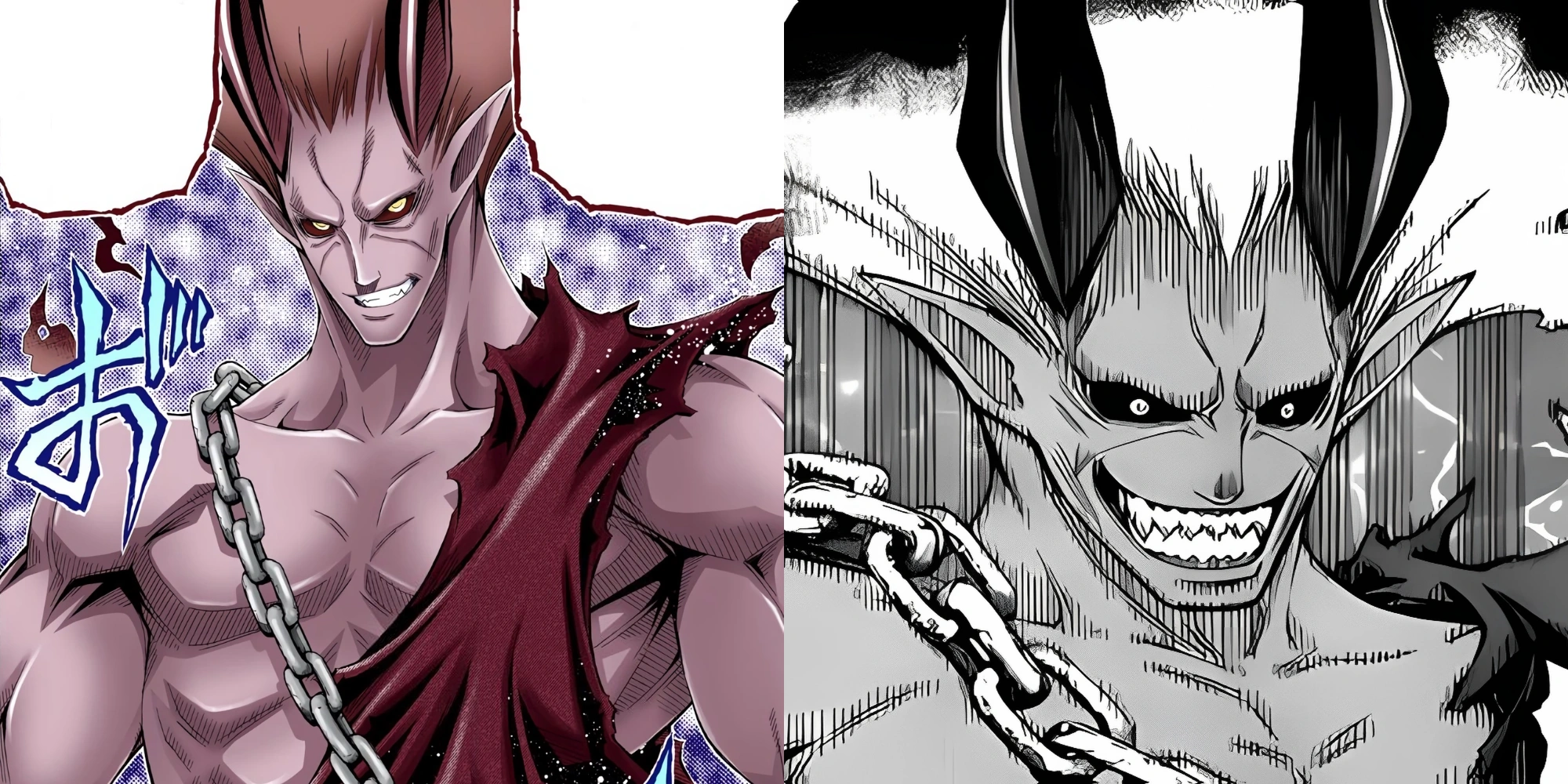
Iihiko’s Style renders any damage he inflicts absolutely permanent—not even reality warpers, time manipulators, or Kumagawa’s All Fiction can undo his destruction.
Iihiko Shishime comes in at number two with an ability that breaks one of the fundamental assumptions of reality: that things can be fixed or healed. His Style, Irreversible Destruction, ensures that any damage he inflicts—whether to objects, people, or even abilities—is absolutely permanent.
This doesn’t sound that impressive until you realize what it means in the context of Medaka Box, where characters can manipulate reality, erase damage, reverse time, or rewrite causality. None of that matters against Iihiko. If he punches you, that damage cannot be healed—ever. If he destroys a building, it cannot be rebuilt or restored—ever. Even Kumagawa’s All Fiction, which can erase anything from existence including damage or death, cannot undo Iihiko’s destruction.
What makes Iihiko’s Style particularly terrifying is its absoluteness. When we talk about Medaka Box broken abilities, this one stands out because it establishes a rule that supersedes all other rules. The series introduces numerous reality warpers, but Iihiko’s power serves as a sort of meta-commentary on the limits of even the most absurd abilities.
In a world where virtually nothing is permanent thanks to characters who can manipulate time, space, and reality itself, Iihiko stands as the exception—his destruction is the one thing that remains absolute, making his Style one of the most fundamental reality-breaking powers in the series.
3. Kakegae Irifune (Unreasonable Taxation)
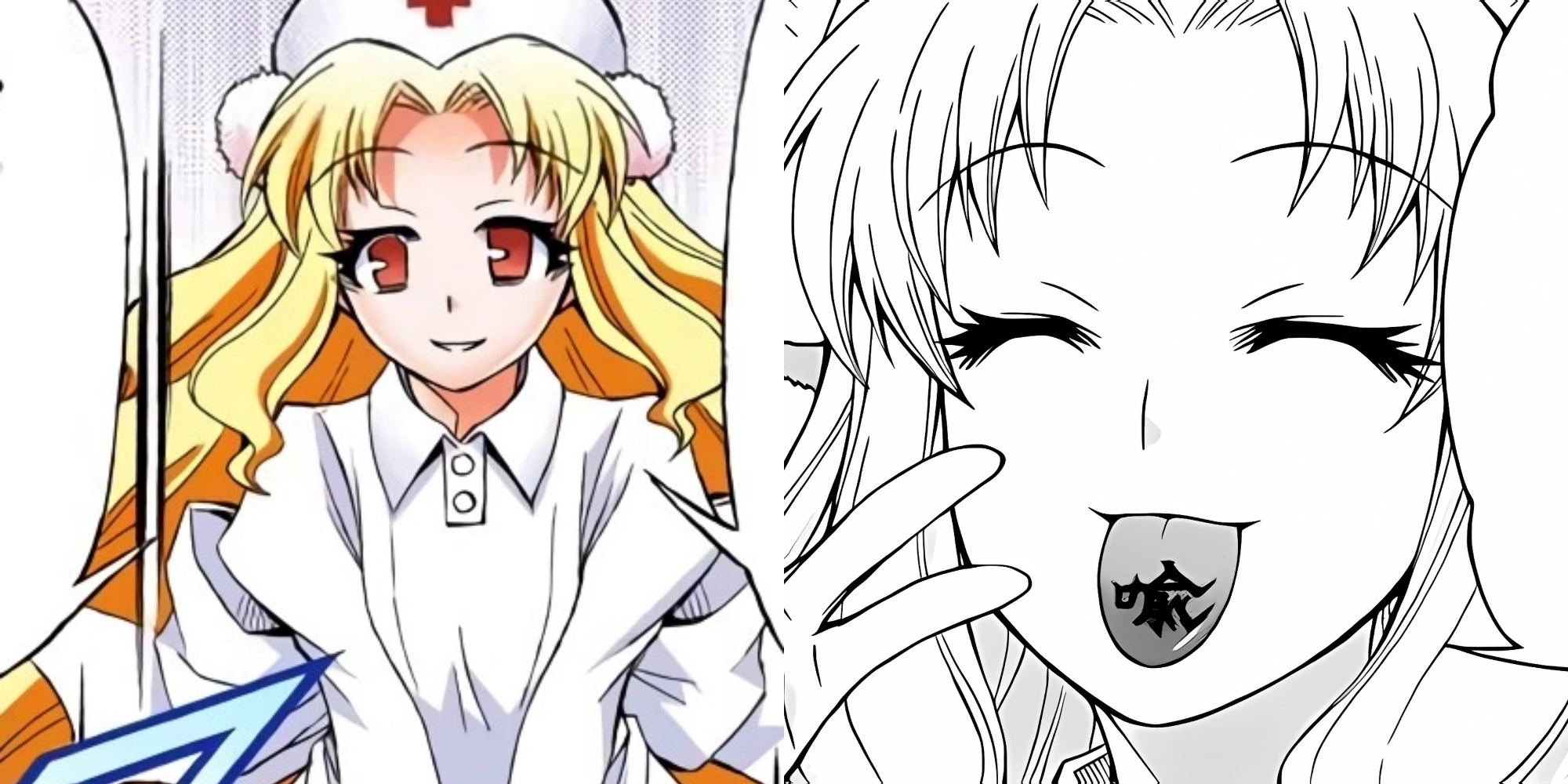
Kakegae’s ‘Unreasonable Taxation’ allows her to copy any Style, including Namanie’s reality-breaking ‘Therefore’ ability, making her a power thief of the highest order.
Kakegae Irifune ranks third with a Style that’s straightforward but incredibly potent: Unreasonable Taxation, which allows her to copy the Styles and skills of others.
What makes Kakegae particularly dangerous is that she doesn’t just mimic abilities—she can copy even the most reality-warping Styles like Namanie’s Contradictory Conjunction. This effectively makes her a second-hand reality breaker, capable of wielding powers that fundamentally alter causality, logic, and physics, without needing to develop those abilities herself.
Her copying ability puts her in a similar category to Medaka Kurokami’s “The End,” which can copy Abnormalities, but Kakegae focuses specifically on Styles. This distinction is important because it means she can potentially acquire abilities that function on a conceptual level rather than just enhanced physical or mental capabilities.
While her power is derivative rather than inherently reality-breaking, the fact that she can potentially wield Namanie’s logic-defying “Therefore” Style or other conceptual powers places her high on this list. Her limitation is that she needs access to Style users to copy from, but in a world filled with reality-warping abilities, that’s less of a disadvantage than it might seem.
In some ways, Kakegae represents a middle ground between Ajimu Najimi’s 12 quadrillion skills (which include countless reality-warping abilities) and more focused characters with single powerful abilities—she has the potential for versatility through acquisition rather than innate variety.
4. Shibuki Shibushi (Scar Dead)
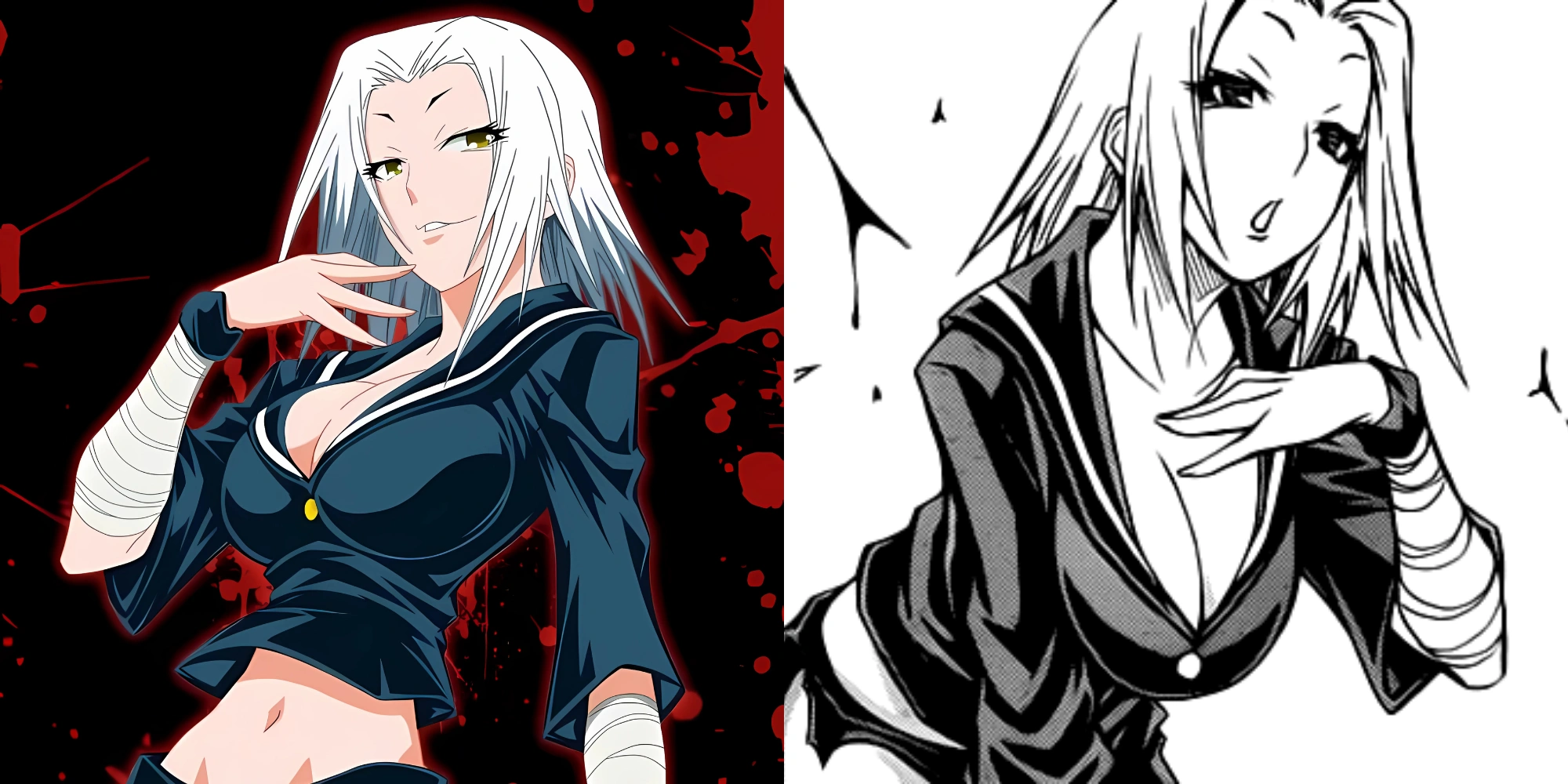
Shibuki’s ‘Scar Dead’ can reopen any wound or trauma a person has ever experienced, physical or mental, essentially manipulating their personal timeline and making the past present again.
Shibuki Shibushi’s Style, Scar Dead, manipulates reality by blurring the boundaries between past and present. Her ability allows her to reopen any wound—physical or psychological—that her target has ever experienced.
What makes this ability reality-breaking is its temporal implications. Scar Dead effectively negates the concept of healing and recovery by imposing past states onto the present. No matter how much time has passed or how completely someone has healed, Shibuki can bring that injury back as if it just happened.
The conceptual nature of this power becomes even more apparent when we consider that it works on mental trauma as well. Shibuki can resurface psychological wounds, forcing targets to relive their worst moments and traumas. This isn’t just physical reality manipulation but extends to manipulating the reality of a person’s mental state and history.
While not as broadly reality-warping as Namanie’s causality manipulation or Iihiko’s absolute destruction, Scar Dead represents a focused but profound violation of how time and healing are supposed to work. It’s a perfect example of how Styles often manipulate specific concepts (in this case, “wounds” and “past states”) rather than providing generalized power boosts like Abnormalities.
Against characters with extensive battle histories or traumatic pasts, Shibuki becomes particularly dangerous, as their own experiences become weapons to use against them. This conceptual leveraging of personal history makes Scar Dead one of the most psychologically unsettling reality-breaking abilities in the series.
5. Gagamaru Chougasaki (Encounter)
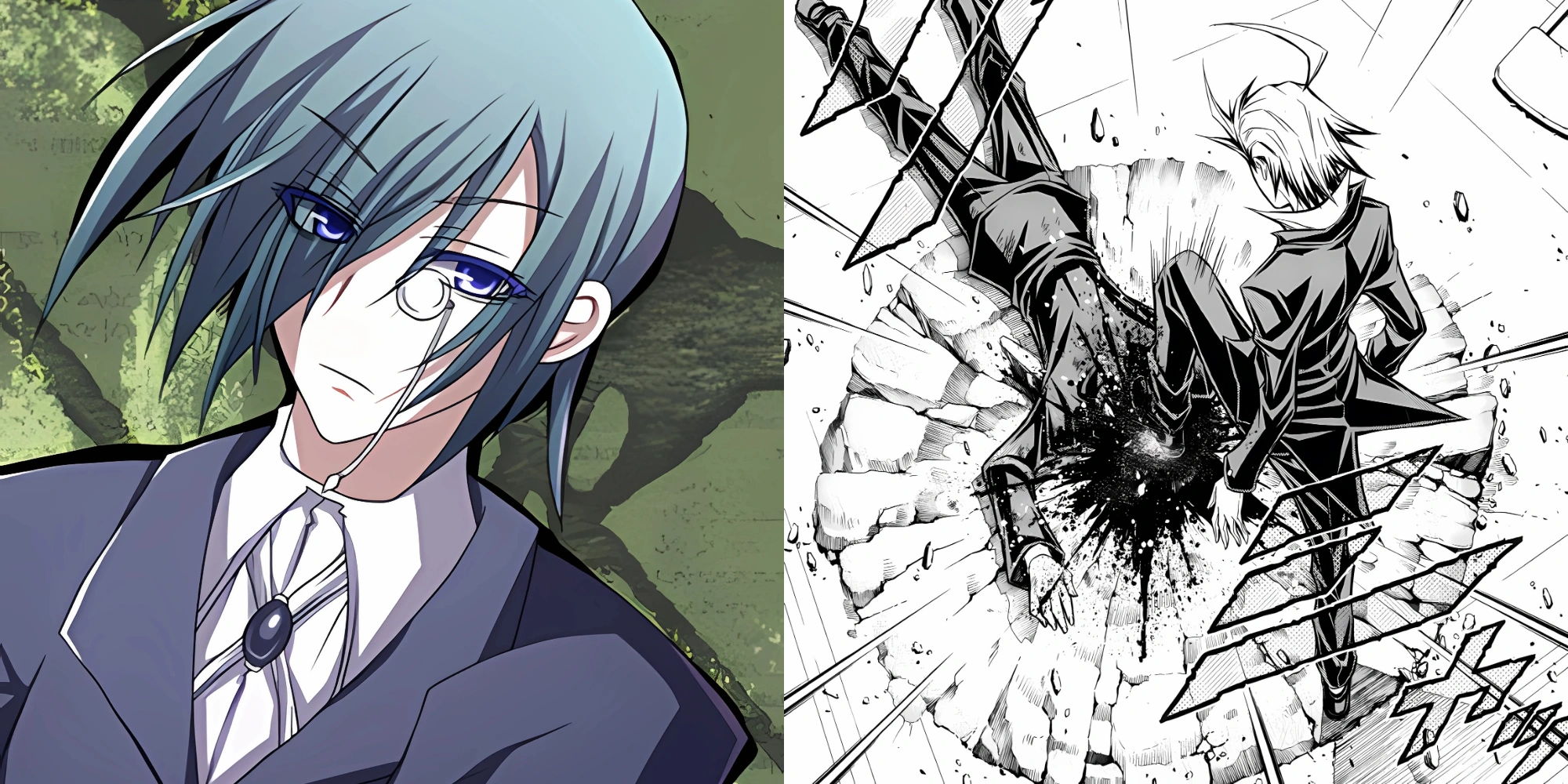
Gagamaru’s ‘Encounter’ Style manipulates the probability of meetings and interactions, forcing unlikely encounters or preventing destined ones through subtle reality manipulation.
Gagamaru Chougasaki’s Style, Encounter, earns the fifth spot by manipulating a specific but crucial aspect of reality: the probability of meetings and interactions between people.
At first glance, this might not seem as flashy as other abilities on this list, but its reality-breaking nature becomes apparent when we consider its implications. Gagamaru can force unlikely meetings to occur or ensure that desired meetings never happen, fundamentally altering the causal chain of events related to interpersonal connections.
This represents a subtle but significant manipulation of both probability and causality. By controlling who meets whom and under what circumstances, Gagamaru can reshape entire sequences of events and relationships. In a narrative sense, he’s essentially manipulating the plot itself by controlling which characters interact.
The power of this ability isn’t in direct combat application but in strategic manipulation of circumstances. By preventing key allies from finding each other or forcing encounters between enemies, Gagamaru can create chaotic situations that benefit him without ever directly engaging in conflict.
While less overtly reality-breaking than abilities that directly alter physics or logic, Encounter demonstrates how Styles can manipulate specific conceptual domains (in this case, interpersonal connections and probability) to achieve effects that would be impossible through conventional means.
6. Aoki Aka (Unknown Hero)
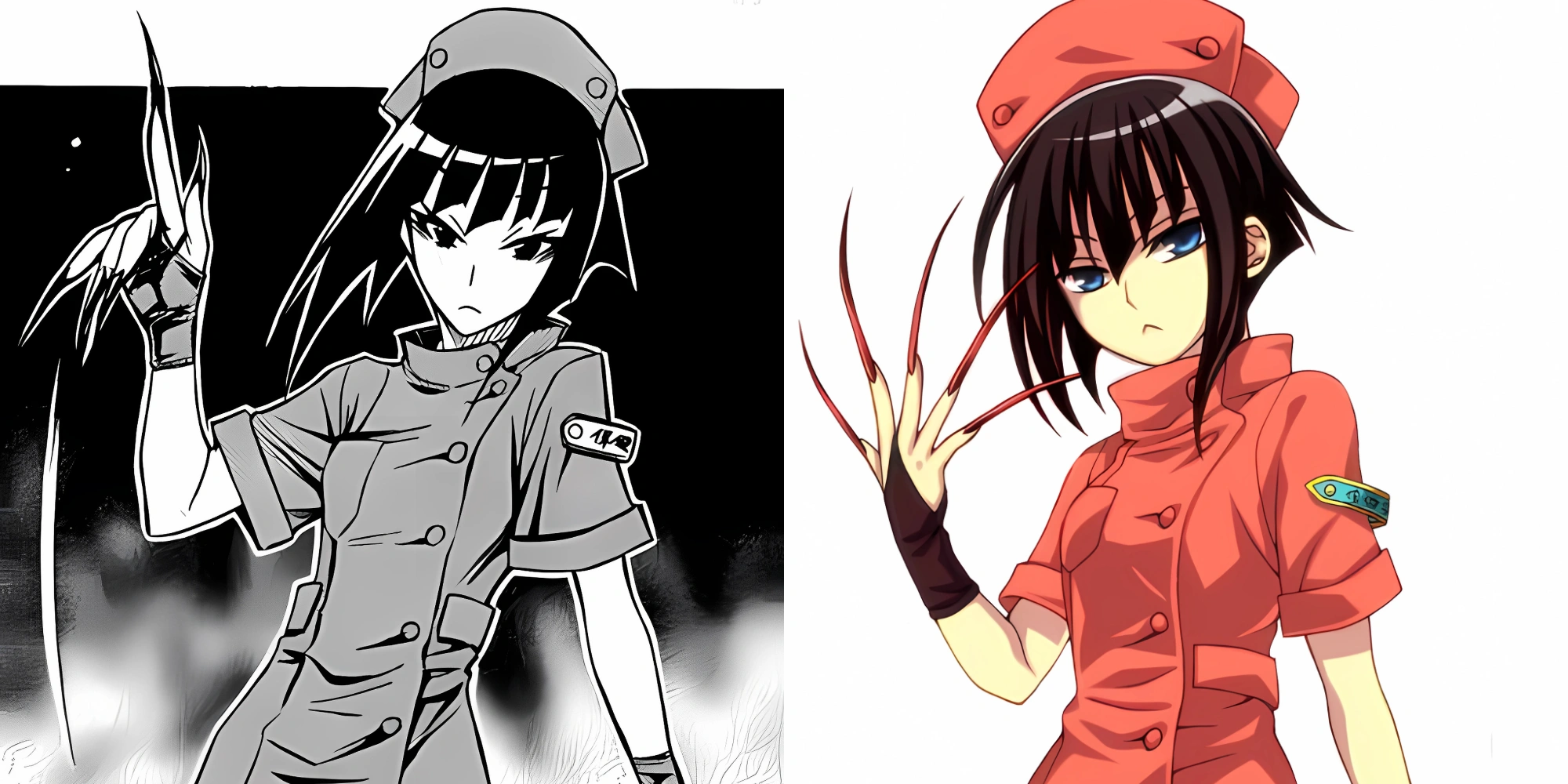
Aoki’s ‘Unknown Hero’ Style manipulates how others perceive her, making her fade into the background of reality itself, becoming narratively insignificant to everyone around her.
Aoki Aka’s Unknown Hero Style breaks reality in perhaps the most meta way on this list: by manipulating her place in the narrative itself. This ability allows her to alter how others perceive her, making her seem insignificant, unnoticeable, or like a background element.
What makes this particularly fascinating is that it doesn’t just affect what people see—it changes how they interpret her presence and importance. She essentially becomes an “unknown hero,” a character deemed unworthy of attention within the story’s framework.
In a series like Medaka Box that frequently plays with metafictional concepts, this represents a unique kind of reality manipulation. Aoki isn’t just turning invisible; she’s altering her position within the narrative structure that governs the world. This allows her to act without drawing attention or being registered as a threat, essentially exploiting blind spots in others’ perception of reality.
While less directly powerful than abilities that manipulate causality or impose absolute rules, Unknown Hero demonstrates how Styles can operate on the level of narrative and perception—a subtle but profound form of reality-breaking that works by changing how the world is understood rather than how it physically functions.
This type of meta-manipulation connects to broader themes in Medaka Box about stories, roles, and the nature of fictional reality, making it conceptually significant even if its practical applications are more limited than some higher-ranked abilities.
7. Zenkichi Hitoyoshi (Devil Style)
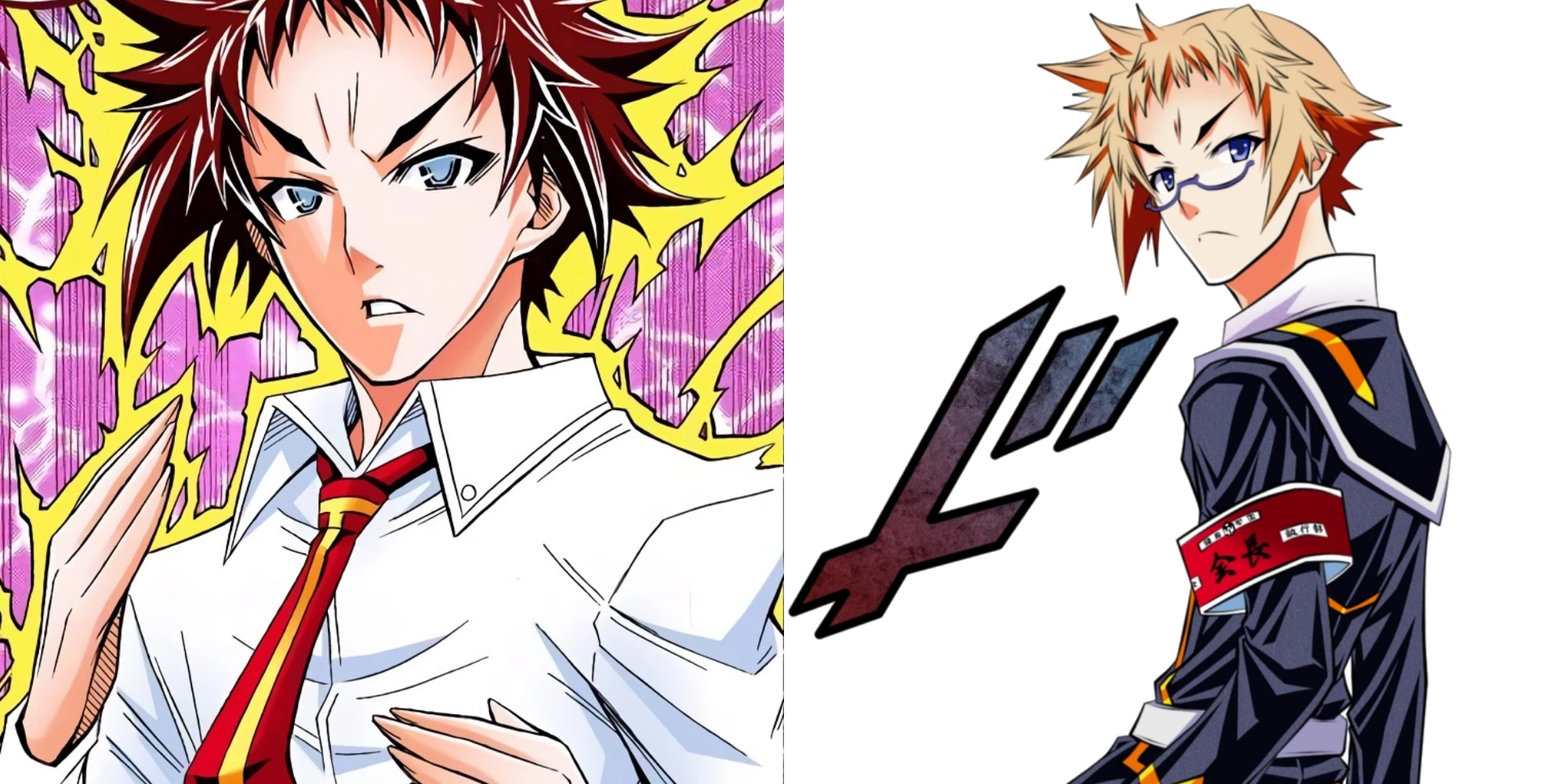
Starting as a ‘Normal,’ Zenkichi eventually developed the Devil Style which negates luck and coincidences around him, forcing reality to follow strict cause-and-effect without convenient plot armor.
Rounding out our list is Zenkichi Hitoyoshi, whose journey from Normal to Style user makes him particularly significant. His primary Style, Devil Style, might seem modest compared to others on this list, but it breaks reality in a fundamental way: by eliminating luck and coincidence.
Devil Style is a passive ability that negates positive luck for Zenkichi’s opponents. Attacks won’t conveniently miss vital areas, enemies won’t luckily find advantageous footing, and “plot armor” moments simply don’t happen. This forces a stricter, more deterministic reality where outcomes depend purely on skill and direct cause-and-effect.
What makes Zenkichi’s inclusion on this list particularly interesting is that he later temporarily gains access to more overtly reality-breaking Styles like Contradictory Conjunction. His evolution from Normal to Style user (and eventually wielding multiple Styles) showcases the unique position of Styles in the power hierarchy—they can be learned or acquired rather than being innate like Medaka Kurokami’s abnormal powers.
Zenkichi also develops Parasite Seeing, which allows him to see through others’ eyes, granting enhanced perception that borders on mind-reading. While less reality-breaking than his Devil Style, it represents another way Styles can alter conventional perception and awareness.
What puts Zenkichi on this list isn’t just his Devil Style’s reality-altering properties but what his character represents: the potential for growth and adaptation through conceptual understanding rather than innate gifts. In a series filled with born prodigies like Medaka Kurokami and twisted geniuses like Kumagawa with his All Fiction power, Zenkichi stands out as someone who gains reality-breaking abilities through growth and perspective.
Medaka Box Power System FAQ
How do Styles differ from Abnormalities and Minuses?
The power system in Medaka Box is fascinatingly complex, with clear distinctions between its main categories:
Abnormalities are innate, overwhelming talents that people are born with. Think of Medaka Kurokami’s “The End” ability, which lets her copy and perfect any skill she sees. Abnormals are essentially “born perfect” at something, and their power often defines their entire personality. They’re the “plus” side of the spectrum, representing inherent success and perfection.
Minuses are the opposite—destructive powers born from trauma or negative mental states. Kumagawa’s All Fiction (which can erase anything from existence) is the prime example. Minus abilities are typically harmful, reflecting deep psychological damage. They represent the “negative” side, embodying failure and destruction.
Styles are fundamentally different. They’re not necessarily something you’re born with or develop from trauma—they’re abilities based on concepts, language, specialized techniques, or unique perspectives. The key distinction is that even “Normals” like Zenkichi can learn and use Styles, showing they’re more about understanding than innate talent or psychological state.
What makes Styles particularly fascinating is how they often manipulate reality through abstract means. Namanie’s “Therefore” Style breaks causality through grammar. Iihiko’s Irreversible Destruction imposes an absolute rule on damage. They don’t just apply force within reality’s rules—they change the rules themselves.
This three-way distinction creates a brilliant commentary on different paths to power: innate perfection (Abnormal), psychological damage (Minus), or conceptual understanding and perspective (Style).
How powerful is Kumagawa's All Fiction compared to top-tier Styles?
Kumagawa’s All Fiction is often considered one of Medaka Box’s most broken abilities, but comparing it to top-tier Styles reveals interesting distinctions in how these powers break reality.
All Fiction allows Kumagawa to “make anything nothing”—essentially erasing things from existence. He can erase physical objects, injuries, death, even abstract concepts like time or colors. This Minus ability stems from Kumagawa’s deeply negative worldview where “nothing matters,” making it psychologically consistent with the Minus category.
When compared to Namanie’s Contradictory Conjunction, there’s a fascinating contrast: All Fiction erases existing reality, while Contradictory Conjunction rewrites how reality functions through causal manipulation. All Fiction says “that doesn’t exist anymore,” while Contradictory Conjunction says “this leads to that because I say so.”
Against Iihiko’s Irreversible Destruction, we actually see a direct interaction—All Fiction cannot undo damage caused by Iihiko. This creates a hierarchy where Iihiko’s Style trumps Kumagawa’s Minus, suggesting some Styles can establish rules that even reality erasure cannot overcome.
What makes this comparison particularly interesting is that All Fiction operates on what exists, while many Styles operate on how reality functions. Kumagawa can erase anything, but Styles like Contradictory Conjunction or Irreversible Destruction change the underlying rules of how the universe works.
This doesn’t mean All Fiction is weaker—it’s still absurdly powerful—but it highlights how Medaka Box creates different flavors of reality manipulation. Kumagawa’s power is more direct and universal, while top Styles tend to be more conceptual and rule-based.
What makes Medaka Kurokami's abilities different from Styles?
Medaka Kurokami’s abilities represent the pinnacle of Abnormalities but operate on fundamentally different principles than Styles, showcasing the brilliant contrasts in Medaka Box’s power system.
Medaka’s primary ability, “The End,” allows her to copy and perfect any ability she witnesses. Unlike Kakegae’s Unreasonable Taxation (which copies Styles), Medaka’s copying is intrinsic to her nature—she’s essentially born with the talent to be better at anything than anyone else. This reflects the core nature of Abnormalities: innate, overwhelming talent that defines the person.
The key distinction is that Medaka doesn’t break reality through concepts or rules like Style users do—she simply operates at the absolute peak of what reality allows. She doesn’t change how physics works; she just maximizes what’s possible within those rules. Even her War God Mode is an enhancement of physical capabilities rather than a conceptual reality manipulation.
This creates an interesting dynamic when Medaka faces Style users. Her overwhelming physical abilities and skill copying can be countered by Styles that operate on conceptual levels outside traditional power scaling. This is why Zenkichi, using the Contradictory Conjunction Style temporarily, could potentially challenge Medaka despite her physical superiority.
What makes this particularly fascinating is how it reflects the series’ themes. Medaka represents the “born perfect” prodigy whose talents isolate her, while Style users often represent those who gain power through understanding concepts and perspectives. When Zenkichi finally stands against Medaka, it’s with a borrowed Style—showing how conceptual understanding can potentially overcome innate perfection.
How do Ajimu Najimi's 12 quadrillion skills relate to Styles?
Ajimu Najimi, with her mind-boggling 12 quadrillion skills, exists in a category beyond the standard Medaka Box power classification. As a “Not Equal,” she transcends the Abnormal/Minus/Style system entirely, but her abilities have fascinating relationships with Styles.
Among Ajimu’s countless skills are many that resemble or parallel Styles. Some directly manipulate concepts, language, or fundamental rules similar to how Styles function. The key difference is that Ajimu doesn’t learn or develop these abilities through conceptual understanding like Style users—they’re intrinsic to her transcendent nature as a being that has existed for quadrillions of years.
The relationship becomes particularly interesting when we consider that Ajimu seems to understand the conceptual foundations of reality that many Styles manipulate. She demonstrates awareness of narrative structures, conceptual hierarchies, and linguistic rules that govern the universe. This suggests she comprehends the same fundamental principles that make Styles work, but on a vastly more expansive scale.
What truly sets Ajimu apart is her meta-awareness of being in a manga. Her abilities often break the fourth wall, acknowledging the fictional nature of her existence. This takes the conceptual reality manipulation of Styles to another level—beyond manipulating in-universe concepts to manipulating the relationship between fiction and reality itself.
This creates an intriguing hierarchy: Style users manipulate specific concepts within reality, while Ajimu manipulates the concepts that define reality as a fictional construct. It’s like comparing someone who can rewrite a paragraph in a book to someone who can change the relationship between the book and its reader.
What is Book Maker and how does it compare to Styles?
Book Maker, Kumagawa’s secondary ability (alongside All Fiction), occupies a fascinating middle ground between Minuses and Styles in how it functions. While classified as a Minus, Book Maker has conceptual aspects that resemble Style abilities.
Book Maker takes the form of a large screw that, when stabbed into someone, equalizes them with Kumagawa. It reduces their physical abilities, intelligence, and special powers to match his, essentially forcing them to experience his “minus” state. The screw itself serves as a physical medium for this effect, similar to how some Styles require specific actions or tools.
What makes Book Maker conceptually interesting is that it imposes a state of “equality with Kumagawa” rather than just weakening the target. This specific conceptual framework—forcing someone to experience Kumagawa’s perspective and limitations—has philosophical implications that go beyond simple power reduction. It’s about imposing a state of being, which aligns with how many Styles function.
Compared to pure Styles like Contradictory Conjunction, Book Maker is more limited in scope—it can only equalize rather than rewriting causality or imposing absolute rules. However, it shares the conceptual nature that makes Styles reality-breaking. Book Maker doesn’t just reduce power; it imposes Kumagawa’s reality on others.
This blurred boundary showcases how Medaka Box’s power categories aren’t always rigid. While primarily a Minus reflecting Kumagawa’s desire to bring others down to his level, Book Maker has elements that parallel Styles in how it manipulates conceptual states rather than just applying direct effects.
